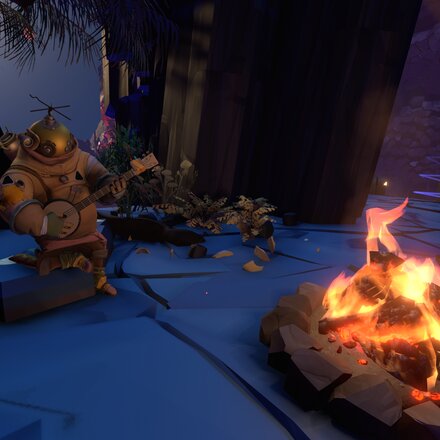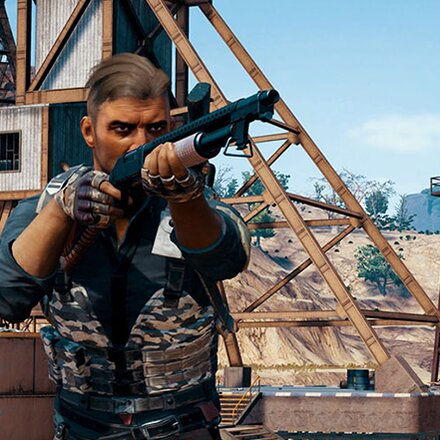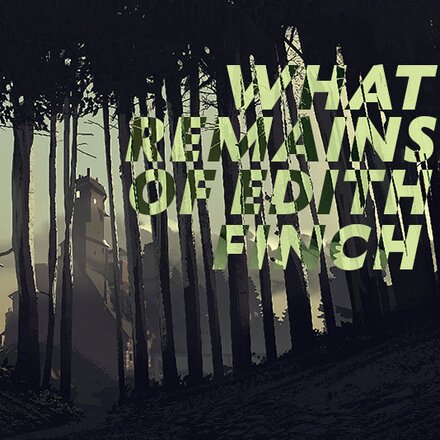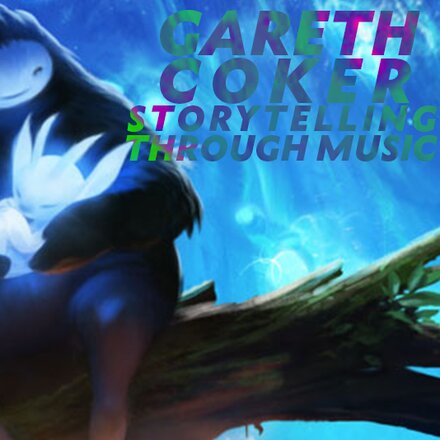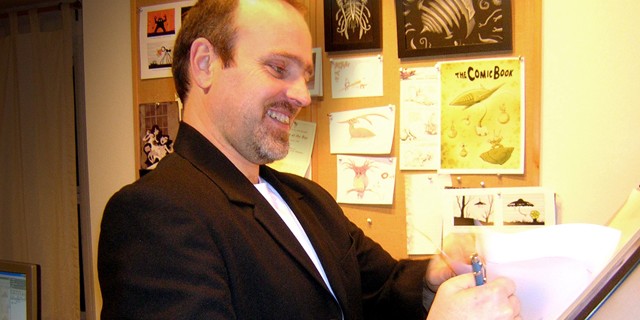
Michel Gagné: Q&A
The artist behind the shooter/ exploration puzzle game Insanely Twisted Shadow Planet gives advice and inspiration.
Published 13 March 2012.
What first inspired you to get into your craft?
Growing up, I was a big fan of comic books, animation and science fiction movies. I knew pretty early on that I would be involved in the artistic field. Then in 1982, I saw The Secret Of NIMH by Don Bluth and made it my goal to get a job as an animator working for his studio.
How did you first break into the industry?
While I was at Sheridan College studying classical animation, I did a short film called, A Touch Of Deceit as my third year project. That was back in 1986. As soon as the film was done, I flew to Los Angeles to meet Don Bluth and show it to him, so that he would hire me. With no appointment and no credentials, I was not able to convince the receptionist to let me past the lobby of the studio, but I was persistent enough to make her promise that she would give the videotape of my film to Don.
I returned to Toronto and immediately got a job at a small animation outfit that specialised in commercials called Light Box Studios. About a week later, I received a phone call from John Pomeroy, the head of animation at Don Bluth Studios at the time. He told me that he and Don had looked at my film and that they'd like me to start working the following Monday on a movie called An American Tail. Although this was not my first job in animation, I look at it as my real start in the animation industry.
Which professional figure in your field do you find the most inspiring?
To be honest, my inspirations don't come from the game industry. Artists, writers and people that have had a big impact on me include: Jack Kirby, Eiji Tsuburaya, Steve Ditko, Picasso, Kandinsky, Yves Tanguy, Yerka, Carl Sagan, Basil Wolverton, René Laloux, Oscar Fishinger, Osamu Tezuka, HR Giger, Miyazaki, Don Bluth, Walt Disney, Ishiro Honda, George Lucas, Steven Spielberg, Arthur C Clarke, Moebius, B R Bruss, Richard Adams, H G Wells, Jack Williamson, Leigh Brackett, Edmond Hamilton, M A Rayjean, Stefan Wul, Philip Wylie, and many, many more...
If you hadn’t managed to break into your field, what was your plan B?
I've always wanted to be an artist, it's part of my genetic make-up. I don't mind working in various industries, be it films, games, comics, etc. As long as I'm creative, I'm happy. I can't imagine my life any other way.
Which game do you wish you could have worked on?
With the help of my partner Joe, and the rest of our team, I made the game I wanted to work on. ITSP was my dream game project as far as I'm concerned.
What single piece of advice would you give to a young person trying to break into your discipline and get noticed? How do you stand out from the crowd?
Be an original. Look at other art disciplines and nature for inspiration. Nurture your imagination.
Were there any people who supported/mentored/championed you in the early stages of your career? How important are these kinds of relationships?
It's important to always keep your ego in check and be open to suggestions and ideas. I've had the privilege to work with some of the best talent in art, animation, special effects and comics. I've picked up a lot of tricks along the way and was given some excellent tips that helped me become a better artist. But to be a bit more specific, I'd say the six years I worked for Don Bluth, at the start of my career, were instrumental in my formation and gave me the tools and confidence that allowed me to succeed in future endeavours.
How do you think the UK games industry will change in the next few years?
There are probably a lot of people that are more qualified to answer this. I fell into the game industry thanks to meeting my partner Joe Olson, and feel like an outsider really. I got into games because I saw the potential of using the medium as a new canvas for my art, animation and ideas.



